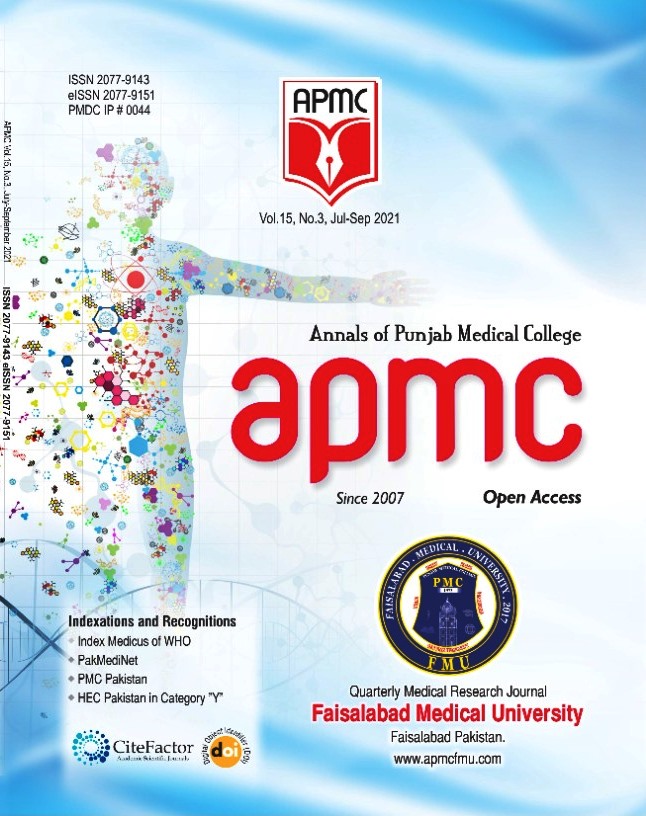Frequency of Different Patterns of Alopecia Areata in our Population – A Single Tertiary Care Centre Study
Abstract
Background: Alopecia areata (AA) is an autoimmune disorder characterized by non-scarring, patchy, confluent or diffuse pattern of alopecia without any specific distribution or site of involvement of hair loss. Different patterns of AA include patchy, reticulate, ophiasis, ophiasis inversus (sisaipho), totalis, universalis, barbae, diffusa, triangular and perinaevoid alopecia areata. Objective: To determine frequency of different clinical patterns of alopecia areata in our population. Study Design: Cross sectional survey. Settings: Department of Dermatology, Jinnah hospital, Lahore, Pakistan. Duration: Six months from 01-07-2018 to 31-12-2018. Methods: 400 patients of both genders and all ages, presented to the Department of Dermatology, Jinnah Hospital, Lahore were enrolled and segregated into different sub-types according to the clinical findings. The results were recorded on predesigned proformas. Results: The mean age of the patients was 25.18 years with standard deviation of 8.84 between the age of 15 years and 55 years. This included 239 (59.75%) male patients and 161 (40.25%) female patients. According to this study the most common variety of Alopecia Areata was found to be ’Patchy’ comprising of 270 patients (67.5%) followed by ‘Universalis’ and ‘Barbae’ comprising 7.5% each. ‘Sisaipho’ was the fourth with 23 patients (5.8%). 294 (61.6%) patients presented with acute episode of disease i.e. <1 year while 106 (22.2%) patients had chronic disease (>1 year). Conclusion: The results of our study showed that the most common pattern of alopecia areata was patchy alopecia areata followed by universalis, barbae, sisaipho, ophiasis, reticulate and totalis. The least common pattern was triangular.

 This work is licensed under a
This work is licensed under a 